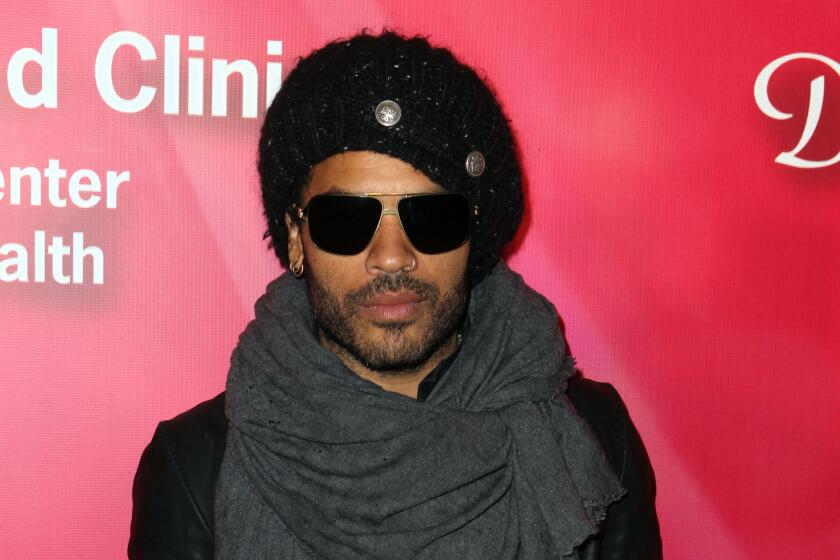Faction aims to take over SAG leadership
As talks between the Screen Actors Guild and the major studios founder, a coalition of actors is mounting an election challenge to a group that swept SAG President Alan Rosenberg into office nearly three years ago, deepening a rift inside Hollywood’s largest union.
The challengers are taking direct aim at Membership First, the Hollywood-based political group within SAG that holds a slight majority on the national board and came to power in 2005 vowing to take a harder line in negotiations with the studios.
Dissidents blame the group for bungling the current negotiations and spearheading an ill-fated campaign to discredit the smaller actors union, the American Federation of Television and Radio Artists. SAG recently conducted an unsuccessful campaign to defeat a contract negotiated by AFTRA, an effort that deeply divided the union.
The political infighting -- both within the guild and between the two unions -- has enabled the studios to pursue a divide-and-conquer strategy that has weakened SAG’s leverage at the bargaining table. Indeed, SAG leaders blame AFTRA for playing into the studios’ hands by undercutting the bigger union’s negotiations by agreeing to what they view as a weak contract.
Calling itself Unite for Strength, the dissident group is running a slate of candidates to fill 11 seats in the powerful Hollywood division that are up for grabs on the national board. In addition, the group is competing for an additional 22 seats for those who serve as alternates to replace board members who often are working.
The candidates include Kate Walsh and Amy Brenneman, the stars of “Private Practice”; Doug Savant, who plays the harried husband Tom Scavo on “Desperate Housewives”; and Adam Arkin, known for his role as Aaron Shutt on “Chicago Hope.”
In all, nearly one-third of the board’s 71 seats will be decided in the Sept. 18 election (the deadline for declaring candidacies is today). Although Rosenberg has one more year in his term, the results could be pivotal in gauging support for his negotiating strategy and could change the balance of power in the notoriously fractious 120,000-member union.
“We think the current leadership has put SAG on a dangerous path,” said Ned Vaughn, a veteran character actor and spokesman for the slate.
Vaughn helped organize a recent petition signed by more than 1,500 actors, including Meryl Streep and Charlie Sheen, that urged the board to limit contract voting in the union only to members who work at least an average of one day a year. The board rebuffed the demand.
He and other candidates want to see the two actors unions merge.
“It definitely doesn’t help us negotiate a contract when there are two unions pitted against each other,” Walsh said. “We need to be one union.”
That could be hard to accomplish, however, given the deep animus between leaders of the unions and years of turf wars that culminated earlier this year in AFTRA suspending its longtime bargaining partnership with SAG.
Previous efforts to merge the unions have failed amid concerns that SAG would lose its autonomy.
Not surprisingly, the incumbent group is running its own slate of high-profile actors, including Keith Carradine, who plays a special agent in the Showtime series “Dexter.” Other high-profile board members who belong to Membership First include Elliot Gould and Valerie Harper.
Kent McCord, first vice president of SAG and one of the leaders of Membership First, accused critics of “a pretty desperate attempt to divide the union. The fact of the matter is, in these negotiations working members have a real concern about the issues on the table and, overall, are united in what the union is trying to do.”
Rosenberg said his critics were misguided. “The future of SAG and the ability of actors to earn a living hangs in the balance here, and it’s AFTRA that has put us all in jeopardy.”
Infighting within SAG is nothing new. Through its 75-year history, the guild has been riven with conflicts between New York and Hollywood and sparring between liberal and conservative factions. Some are still fuming over a contract negotiated by former SAG President Ronald Reagan nearly half a century ago that limited the payment of residuals from movies rerun on TV only to movies filmed after 1960.
“There’s a permanent reservoir of disgruntled actors, which tends to make for militancy,” said David Prindle, author of “The Politics of Glamour,” a book on the history of SAG.
The latest power struggle emerged in the late 1990s, when a group of dissident actors, then known as Performers Alliance, challenged the leadership of SAG President Richard Masur. The actors were deeply unhappy with a commercials contract he had negotiated, and they backed a rival candidate, William Daniels, who led the union through a six-month commercials strike -- the longest in SAG’s history.
Although actors secured higher residual payments when the strike ended, the walkout took a heavy toll on members and caused some productions to shift permanently to other countries.
Unpopularity over the strike helped fuel the election of former “Little House on the Prairie” star Melissa Gilbert, a moderate who soon found herself battling many of the same actors who fought with Masur. They blocked several of her initiatives, including a proposed merger with AFTRA and an agreement with talent agents.
And in September 2005, the group took control of the board under the leadership of Rosenberg, who immediately vowed to take a harder line in negotiations and to demand an increase in the share of residuals actors get from DVD sales.
The new board fired Executive Director Greg Hessinger, who was only a few months on the job. They replaced him with Doug Allen, a former official with the NFL Players Assn., who has been praised by Hollywood supporters as a strong leader but is blamed by others, including New York board members, for triggering the fallout with AFTRA.
--
More to Read
The biggest entertainment stories
Get our big stories about Hollywood, film, television, music, arts, culture and more right in your inbox as soon as they publish.
You may occasionally receive promotional content from the Los Angeles Times.







